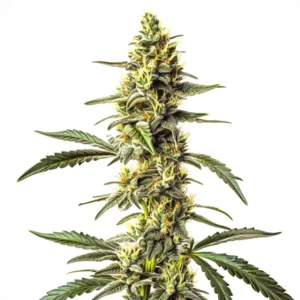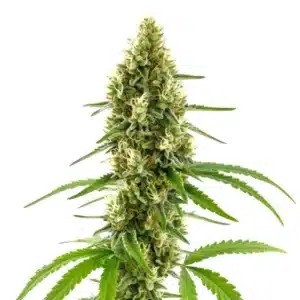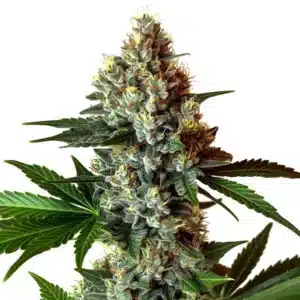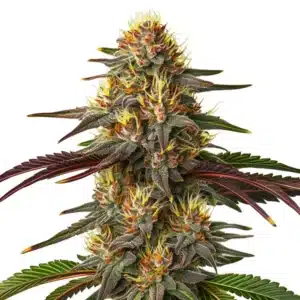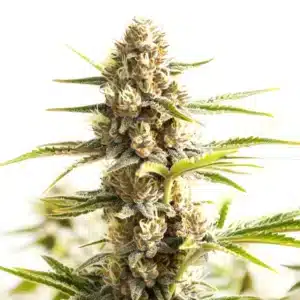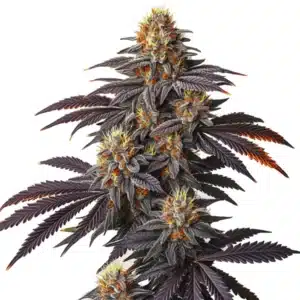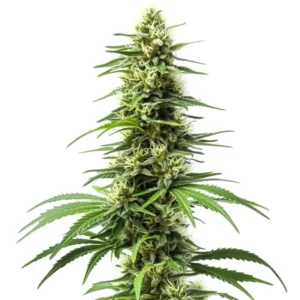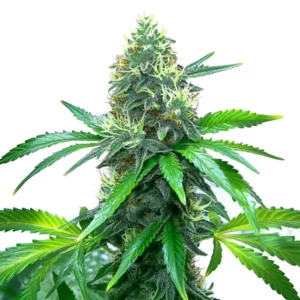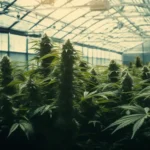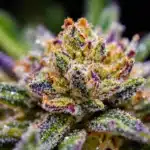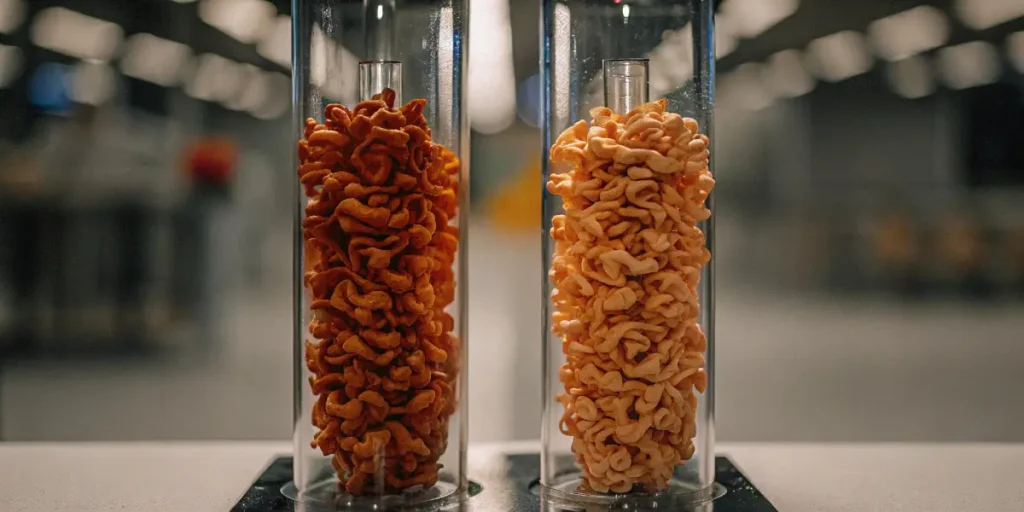
Difference Between THCA Synthase and CBDA Synthase
When diving into the world of cannabis cultivation, one often encounters the terms THCA synthase and CBDA synthase. These enzymes play a pivotal role in the development of cannabinoids. You might wonder how THCA synthase and CBDA synthase differ. Let’s break it down into simpler terms.
THCA synthase and CBDA synthase are enzymes responsible for creating THCA and CBDA, the precursors of THC and CBD, respectively. They kickstart the process by converting precursor molecules in the cannabis plant. Although both enzymes are crucial for cannabinoid production, they cater to different metabolic pathways.
Recommended Strains
CBD Harlequin (1:25)
|
|
CBD | 20% – 25% (High) |
|
|
Type | CBD Feminized |
|
|
Yield | Medium |
|
|
Phenotype | 55% Indica / 45% Sativa |
CBD Harlequin Kimbo Kush (1:2)
|
|
CBD | 11% – 15% (Medium) |
|
|
Type | CBD Feminized |
|
|
Yield | High |
|
|
Phenotype | 60% Indica / 40% Sativa |
Why does this matter to growers and consumers? Knowing the function of these enzymes can influence the choice of cannabis strains. For instance, if you’re looking for a strain high in THC, you might prioritize those with a strong presence of THCA synthase. Conversely, strains with more CBDA synthase are ideal for high-CBD products.
THCA Synthase: Catalyst for THC Production
THCA synthase is the enzyme responsible for converting cannabigerolic acid (CBGA) into tetrahydrocannabinolic acid (THCA). This is the critical step in the production of THC, the psychoactive component of cannabis. Without THCA synthase, there would be no THCA to decarboxylate into THC.
For growers, selecting strains with a robust expression of THCA synthase is essential for maximizing THC content. THCA synthase vs CBDA synthase metabolic pathways can significantly influence the psychoactive potency of the cannabis plant. A popular choice for high-THC strains is the Gorilla Glue 4 strain available at Blimburn Seeds.
Furthermore, THCA synthase and CBDA synthase enzymes influence the overall growth profile of the cannabis plant in distinct ways. THCA synthase tends to be more active in conditions that favor THC production, such as higher light exposure and optimal nutrient levels. This activity leads to the characteristic psychoactive effects that are highly sought after in recreational cannabis.
Moreover, knowing how these enzymes affect cannabinoid production can help in tailoring cultivation techniques. By monitoring the conditions that promote THCA synthase activity, growers can fine-tune their approach to ensure they achieve the desired potency in their harvest. This strategic approach is crucial in meeting consumer demands and maximizing crop value.
Genetic Factors Influencing THCA Synthase
The genetic makeup of a cannabis plant determines the presence and activity of THCA synthase. Different strains have evolved to express varying levels of this enzyme. This genetic variability is why some strains naturally produce more THC than others.
Environmental factors also play a role in how THCA synthase functions. Light, temperature, and nutrients can affect enzyme activity, leading to differences in THC production. For instance, a strain like Bruce Banner 3 from Blimburn Seeds thrives under specific conditions that enhance its THCA synthase activity.
Genetic differences between THCA synthase and CBDA synthase play a pivotal role in defining the chemical profile of cannabis strains. Variations at the genetic level dictate the enzyme’s expression and activity, influencing the plant’s cannabinoid output. By selecting strains with favorable genetic traits, growers can enhance the desired cannabinoid profile, whether aiming for high THC or CBD content.
Additionally, the role of THCA synthase and CBDA synthase in the cannabis plant cannot be understated. These enzymes are integral to the plant’s ability to produce cannabinoids, and knowing their genetic and environmental interactions is essential. Growers who grasp these dynamics can optimize their cultivation practices, leading to more effective and efficient production of targeted cannabinoids.
Promos & Deals
CBDA Synthase: The Path to CBD
CBDA synthase operates similarly to THCA synthase but focuses on converting CBGA into cannabidiolic acid (CBDA). This enzyme is integral to producing CBD, the non-psychoactive counterpart to THC. The enzymes THCA synthase and CBDA synthase differ in their end products and effects.
For those interested in therapeutic benefits without the high, strains with active CBDA synthase are preferred. This enzyme affects cannabinoid production by leaning towards CBD, providing a different experience for the user. Harlequin available at Blimburn Seeds, is a prime example of a high-CBD strain.
These enzymes also influence the overall consumer experience. While THCA synthase leads to THC production and its associated psychoactive effects, CBDA synthase facilitates the creation of CBD, renowned for its therapeutic benefits. This enzymatic divergence makes certain strains more appealing for medical applications.
Furthermore, knowing how THCA synthase and CBDA synthase affect cannabinoid production helps in creating specialized strains. Growers aiming for a high-CBD yield must focus on enhancing CBDA synthase activity, ensuring the cultivation environment supports the enzyme’s optimal function. This targeted approach is vital for meeting the demands of the burgeoning CBD market.
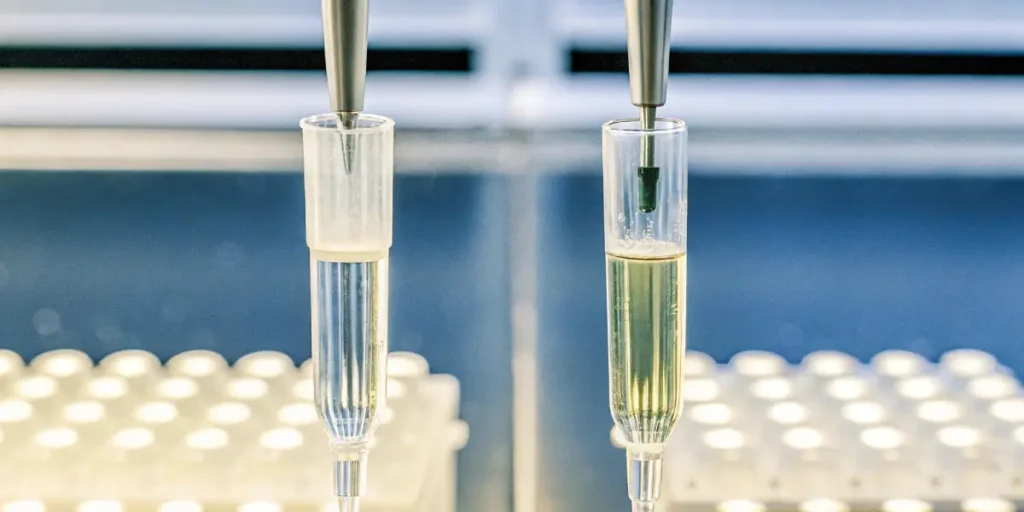
Environmental Impact on CBDA Synthase
Just like with THCA synthase, the environment can influence how CBDA synthase operates. Factors such as soil quality, water availability, and plant stress can affect the enzyme’s activity and the resulting CBD levels.
Growers aiming for high-CBD yield must pay close attention to these environmental variables. Strains with naturally high CBDA synthase activity, such as Harlequin, thrive with balanced care. Adjusting cultivation techniques can enhance the plant’s natural tendency to produce CBD.
Environmental factors can either enhance or inhibit the activity of CBDA synthase, affecting the ultimate cannabinoid profile. By maintaining optimal conditions, such as consistent watering and nutrient-rich soil, growers can maximize CBDA synthase activity. This careful management is crucial in producing high-quality, CBD-rich cannabis.
Additionally, growers must be aware of the genetic expression of THCA synthase and CBDA synthase to select the right strains for their cultivation goals. By choosing varieties that naturally express high CBDA synthase levels, they can better control the conditions that favor CBD production, ensuring their harvest meets both quality and market standards.
THCA Synthase vs CBDA Synthase: Key Differences
The core difference between THCA synthase and CBDA synthase lies in their enzymatic pathways and end products. While both start with CBGA, they diverge into producing either THCA or CBDA. This divergence defines the primary chemical profile of the cannabis plant.
These differences have practical implications. Strains with higher THCA synthase might be better suited for recreational use due to their psychoactive potential. On the other hand, strains with a focus on CBDA synthase are ideal for medical use, offering therapeutic benefits without the high.
THCA synthase and CBDA synthase enzymes differ not only in their end products but also in the metabolic pathways they influence within the cannabis plant. These pathways guide the plant’s development into either THC or CBD dominance, affecting its overall effects and applications.
Knowing these pathways helps in making informed decisions about strain selection and cultivation practices. By recognizing the role of THCA synthase and CBDA synthase in cannabis plant metabolism, growers can strategically choose strains that align with their production goals, whether for recreational or medicinal purposes.
Practical Applications for Growers
Growers need to consider these enzymes when selecting seeds. If the goal is to produce a strain rich in THC, opt for seeds with strong THCA synthase expression. Gorilla Glue 4 and Bruce Banner 3 are excellent choices from Blimburn Seeds.
For a CBD-focused harvest, choosing strains with active CBDA synthase is crucial. Harlequin stands out for its high CBD content. These choices can dictate the success of a cultivation operation, aligning the harvest with market demands and consumer preferences.
By knowing how different synthase enzymes function, growers can better tailor their cultivation techniques to optimize yield and quality. Choosing the right strain based on enzyme expression can significantly affect the end product, ensuring it meets the desired cannabinoid profile.
Moreover, recognizing the genetic distinctions between THCA synthase and CBDA synthase allows growers to refine their approach to cannabis cultivation. By selecting strains with favorable genetic traits and providing optimal growing conditions, they can enhance the plant’s natural ability to produce targeted cannabinoids, ensuring a successful and profitable harvest.

FAQs
What is the main difference between THCA synthase and CBDA synthase?
THCA synthase and CBDA synthase are enzymes that catalyze the production of different cannabinoids. THCA synthase converts CBGA into THCA, the precursor for THC, while CBDA synthase converts CBGA into CBDA, leading to CBD production.
This distinction is crucial for growers and consumers who seek specific effects from cannabis. Strains high in THCA synthase are typically associated with psychoactive effects, whereas those with more CBDA synthase are linked to therapeutic benefits without intoxication. Knowing these differences helps in choosing the right strain for cultivation or consumption.
Knowing how these enzymes work is vital for making informed decisions in cannabis cultivation and use. By selecting strains based on desired cannabinoid profiles, growers can tailor their approach to meet specific market needs, whether for recreational or therapeutic purposes.
This knowledge also empowers consumers to make informed choices about the strains they use. By knowing how THCA synthase and CBDA synthase affect cannabinoid production, users can select strains that align with their desired effects, ensuring a more satisfactory experience.
How do THCA synthase and CBDA synthase affect cannabinoid production?
These enzymes dictate the chemical composition of the cannabis plant by determining which cannabinoids are produced. THCA synthase influences the production of THCA, which decarboxylates into THC, while CBDA synthase affects the production of CBDA, a precursor to CBD.
For growers, this means selecting strains based on the desired cannabinoid profile. A strain’s genetic makeup, combined with environmental factors, will guide how these enzymes function. This results in different levels of THC and CBD, impacting the plant’s overall effects and uses.
The function of THCA synthase and CBDA synthase in cannabis plant metabolism is central to determining the plant’s eventual cannabinoid profile. These enzymes act as catalysts, guiding the conversion processes that lead to either THC or CBD dominance, defining the plant’s psychoactive or therapeutic potential.
Additionally, by knowing how these enzymes affect cannabinoid production, growers can optimize cultivation conditions to favor the desired enzyme activity. This strategic approach ensures that the final product aligns with consumer expectations, enhancing both the quality and marketability of the harvest.
What are the genetic differences between THCA synthase and CBDA synthase?
The genetic differences between these enzymes lie in their expression within different cannabis strains. Some strains have evolved to express higher levels of THCA synthase, while others favor CBDA synthase. This genetic variability is a key factor in the diversity of cannabis strains.
Growers can select strains based on these genetic traits to optimize for specific cannabinoid profiles. Knowing these genetic differences allows for more targeted cultivation practices, ensuring that the end product meets the desired effects and market needs.
THCA synthase CBDA synthase genetic differences are fundamental to the wide array of cannabis strains available today. These differences influence not only the plant’s cannabinoid output but also its growth characteristics, making knowing them essential for effective cultivation.
Moreover, by leveraging these genetic insights, growers can make informed decisions about which strains to cultivate, aligning their efforts with their production goals. This genetic knowledge is key to achieving a successful harvest that meets both market demands and consumer preferences.
Can environmental factors influence THCA synthase and CBDA synthase activity?
Yes, environmental factors can significantly impact the activity of these enzymes. Light, temperature, soil quality, and water availability can all affect how THCA synthase and CBDA synthase operate within the plant.
For instance, a strain known for high THC production may require specific lighting conditions to maximize THCA synthase activity. Similarly, optimal growing conditions can enhance CBDA synthase activity in CBD-rich strains. Adjusting these factors allows growers to fine-tune their cultivation to achieve the best possible results.
Environmental conditions play a crucial role in modulating the activity of THCA synthase and CBDA synthase. By carefully controlling variables such as temperature and light intensity, growers can optimize enzyme activity, enhancing the plant’s ability to produce the desired cannabinoids.
Additionally, knowing the interplay between genetic and environmental factors allows for a more nuanced approach to cannabis cultivation. By aligning these elements, growers can ensure that their crops achieve the highest quality and potency, meeting the expectations of both recreational and medicinal users.
What strains are recommended for high THCA synthase and CBDA synthase activity?
For high THCA synthase activity, strains like Gorilla Glue and Bruce Banner from blimburnseeds.com are recommended. These strains are known for their potent THC levels, making them popular choices for recreational users seeking strong psychoactive effects.
For those focusing on CBDA synthase and high CBD content, Harlequin is a top choice. This strain is celebrated for its therapeutic benefits without the high, making it a favorite among medical cannabis users. Choosing the right strain can greatly enhance the cultivation experience and meet specific consumer demands.
When selecting strains for cultivation, considering the difference between THCA synthase and CBDA synthase is crucial. For high THC production, strains with robust THCA synthase activity, such as Gorilla Glue, are ideal. These strains guarantee a powerful psychoactive experience, aligning with recreational market demands.
Conversely, for a focus on CBD production, strains with strong CBDA synthase expression, like Harlequin, are preferred. These strains provide therapeutic benefits without intoxication, catering to the needs of medical cannabis users. Knowing the enzyme activity in these strains ensures a successful and targeted cultivation process.


